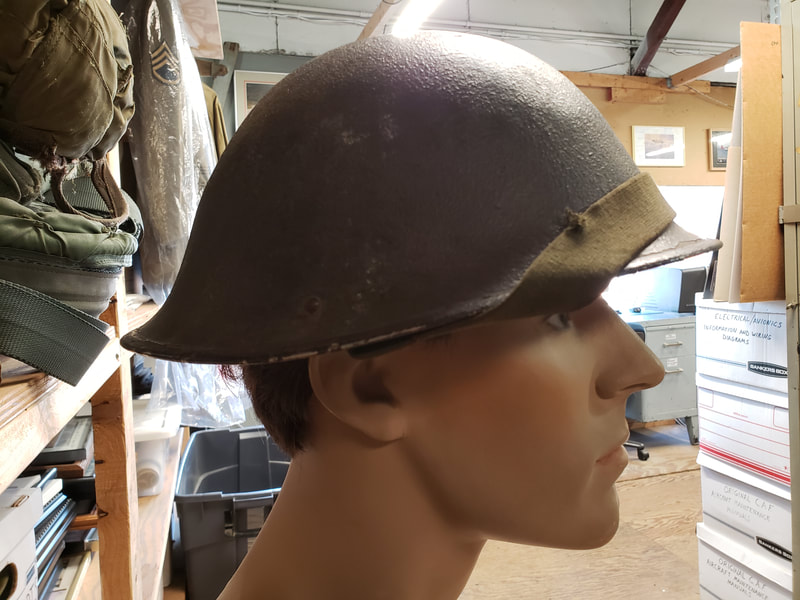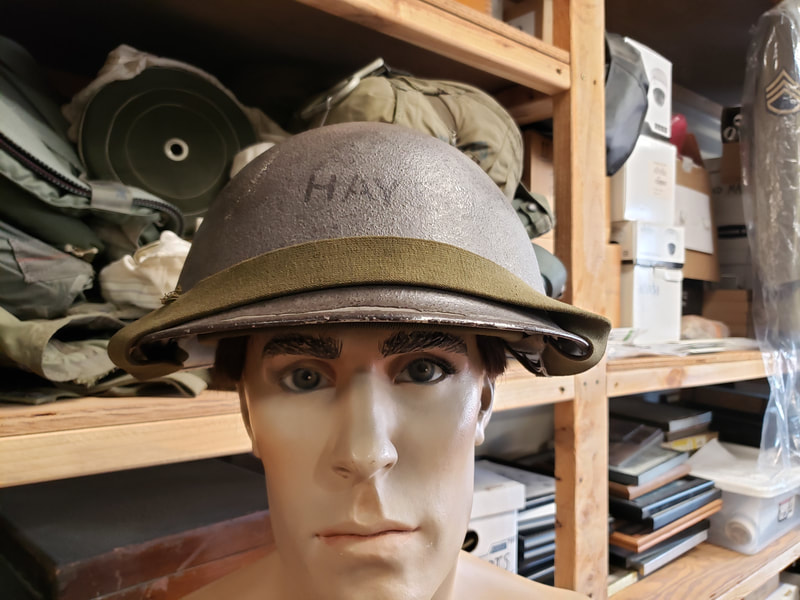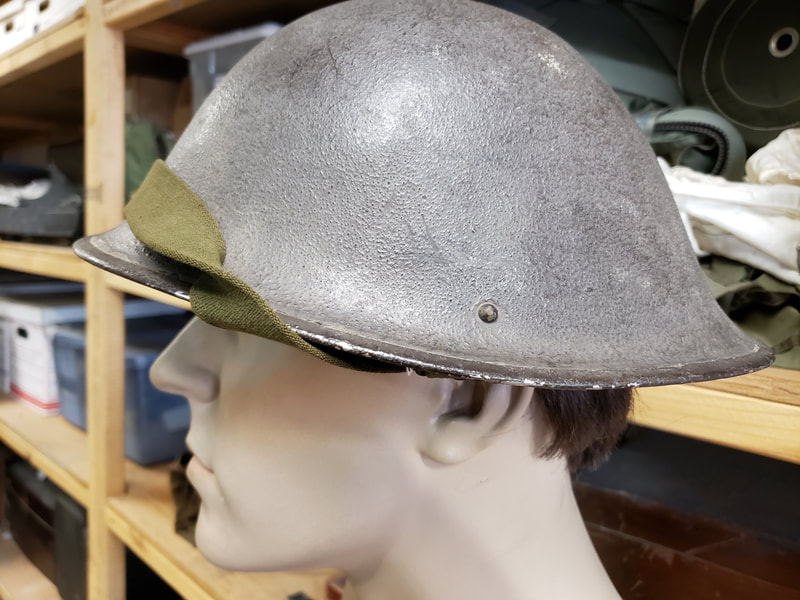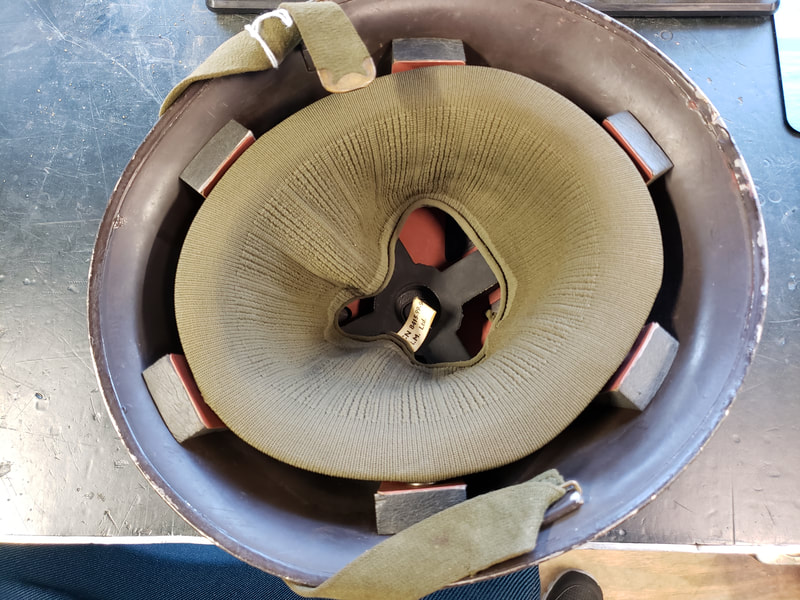|
In 1939, at the beginning of World War II, the helmet type being worn by British and Commonwealth soldiers came from a design by John Leopold Brodie that was introduced into service during World War I. By 1941, a new helmet was developed by the Medical Research Council, an organization responsible for coordinating and funding medical research in the United Kingdom. The new Mark III helmet was not made until 1943, and it offered better comfort and protection to the soldier wearing it. First used in combat by British and Canadian soldiers on the Normandy invasion of June 6, 1944, it is often referred to as the "turtle" helmet because of its vague resemblance to a turtle shell. Although it was meant to replace the Brodie helmet, it ended up being worn as an alternate helmet, serving along with the older Brodie designed helmet from June, 1944 until the end of the war. Once the war ended in 1945, the Brodie helmet was finally replaced.
During the war, improvements were made to the Mark III, which resulted in the Mark IV helmet. In 1944 production of the Mark III stopped in favor of the newer Mark IV, and it closely resembled the older Mark III. Gradually replacing the Mark III, the differences of the Mark IV included the placement of the chinstrap attachment rivets lower down on the helmet, and also a new liner. This new helmet liner featured a quick release fastener that enabled it to be easily removed and attached to the outer metal shell. More commonly known as the "lift the dot" fastener, it consisted of a stud in the very center of the metal shell that was firmly grasped by a spring-loaded grommet on the liner. Such a design allowed the liner to be easily snapped on and off of the attachment stud. With the liner removed and the chinstrap still attached, the outer shell could be used as an improvised water bucket. As the helmet continued to be used by the British armed forces, another improvement was made in the 1950's, resulting in the Mark V. This version featured an improved and more comfortable helmet liner, but it still kept the "lift the dot" fastener. Older Mark IV helmets could be upgraded to the Mark V simply by replacing the helmet liner. The Mark V would continue to be worn by the British armed forces well into the 1980's, until it was replaced by the modern Mark VI helmet. Our helmet shown in these pictures is a Mark V.
0 Comments
Leave a Reply. |
AuthorWelcome to the CAF MN Wing Blog. You will find information on projects we are working on, upcoming events, and more. Archives
April 2024
Categories
All
|




 RSS Feed
RSS Feed